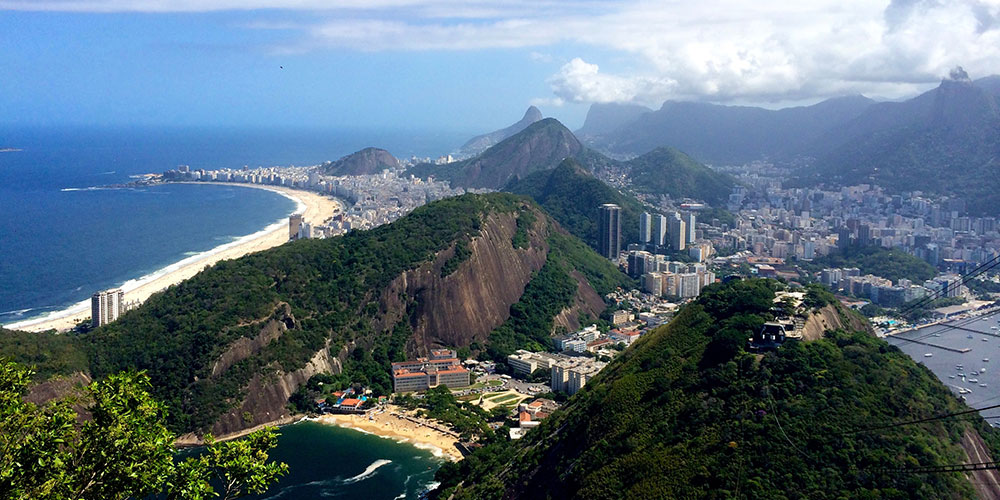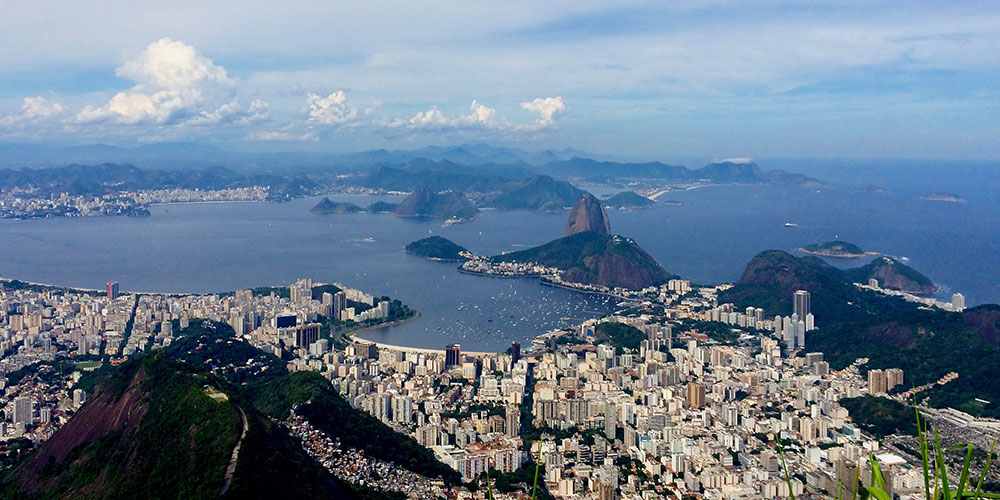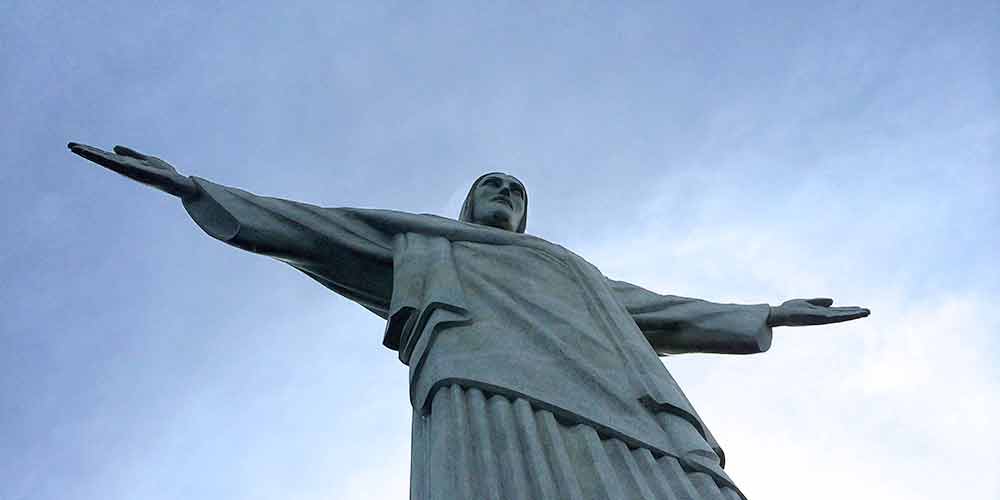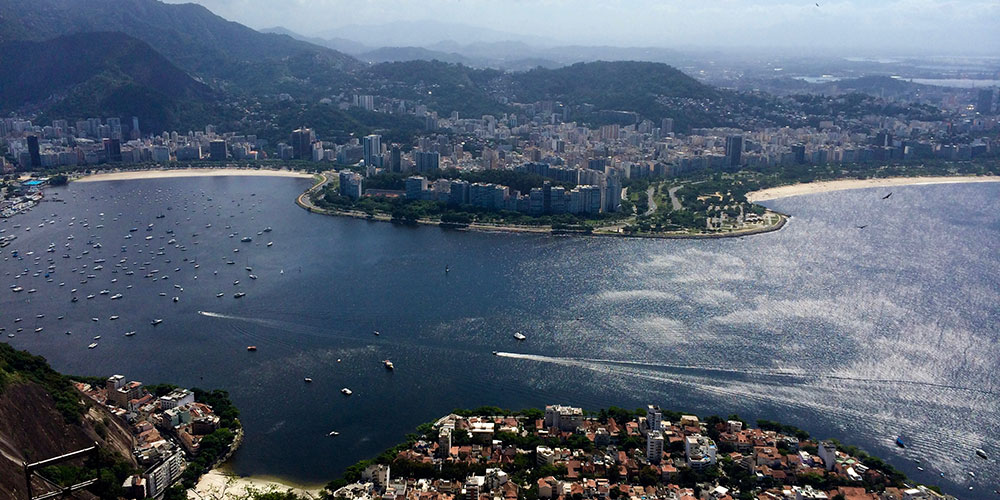Rio de Janeiro handily ranks as one of the most spectacular urban settings in the world. Stretching along a curving coastline of white sand beaches and sparkling blue waters, Rio’s city centers rise along waterfronts, flanked by a jaw-dropping backdrop of jagged green mountain peaks.
Traversing the city’s streets and waterfront promenades is, of course, necessary to get a feel for this passionate city. But perhaps the best way to admire Rio’s extraordinary beauty is from above. Grab your camera and discover the town’s best vantage points for photographing the city from way up on high.
Sugarloaf Mountain and Urca

No trip to Rio is complete without making the journey to the top of Sugarloaf Mountain. The peak rises like an enormous missile, some 1,300 feet above land and is one of the city’s most recognizable landmarks.
To reach the tippy top of Sugarloaf, you’ll take two separate gondolas. The first stretches from Praia Vermelha to Morro de Urca, and the second brings you to Sugarloaf.
Once you disembark, you’ll gaze upon Rio in all her glory, with 360-degree views of Copacabana, Botafogo, Corcovado, Guanabara Bay, Downtown Rio, and the Rio-Niteroi Bridge. You have the option of strolling around paths with various jaw-dropping vistas of land and sparkling sea.
The downside — if there really can be a downside to witnessing so much beauty — is the crowds. Every tourist makes this a must-see, and you’ll likely find yourself rubbing elbows with the masses.
The Arpoador
Between Rio de Janeiro’s iconic Ipanema and Copacabana beaches juts a rocky outcrop, the Arpoador. This tiny peninsula creates a surf break that makes the waters surrounding it a popular destination for surfers jockeying to catch waves.
But for a wannabe photographer, it also provides an elevated landing that allows you to snap photos of the beaches with their glittering high rise apartment buildings and mountain backdrops.
To reach the Arpoador, walk along the pedestrian pathway toward the promontory. You’ll find easy to traverse paths leading to the rock’s highest points. The best time to visit Arpoador is at sunset; bring a cold drink, or order a fresh coconut from a beachfront vendor and enjoy the cool juice.

Two Brothers Mountain (Dois Irmãos)
The trail to Dois Irmãos runs through Vidigal, a jam-packed favela that is remarkably visitor-friendly. In 2012 Rio’s police notoriously “pacified” the neighborhood, opening the possibility for non-residents to explore.
The trail to the top of Dois Irmãos is steep, and can be a bit tricky for those who aren’t sure-footed, but the intense one-hour climb rewards hikers with exceptional views over Rio, including the Leblon and Ipanema neighborhoods below.
Pro-tip: If you’re an early bird and feeling adventurous, head to the peak for sunrise, or just after. The early-morning light is a stunner. On your way down the mountain, mix things up by descending down the mountain’s back, where you’ll have unfettered views of Rocinha, Brazil’s largest favela.
Christ the Redeemer (Corcovado Mountain)

If Sugarloaf Mountain is one of Rio’s most recognized landmarks, the open-armed Christ the Redeemer statue overlooking the city from the top of Corcovado Mountain is indeed, the other.
This iconic white statue rises nearly 125 feet above the 2300-foot-high mountain and is visible from nearly every Rio neighborhood. While seeing the statue up close might bring you to Corcovado Mountain, the real perk of a trip are the sweeping views of this stunning city visible from the statue’s vantage point.
Tijuca National Park
With its beaches and mountain backdrops, it’s unfair to liken Rio to a concrete jungle, still it’s very much a city filled with buildings and asphalts. When you want to take a breather from the bustle head to the woods — an urban forest, if you will. Tijuca National Park is regaled by locals as the world’s largest urban forest, stretching more than 12 square miles between Rio’s Tijuca and Barra da Tijuca neighborhoods.
While embracing nature in the midst of a city is enough of a reason to visit, you’re here for the photos. Get the best up-high look at the city from Tijuca Peak, Rio’s highest mountain. You’ll hike a trail that winds past two stellar lookouts.
The first is Tijuca Mirim Peak. From here, you’ll gape down at downtown Rio, with brilliant views of Maracanã Stadium. Take a deep breath and get ready to climb the steep — and somewhat scary — trail to the summit of Tijuca Peak for more epic, photo-worthy views.




